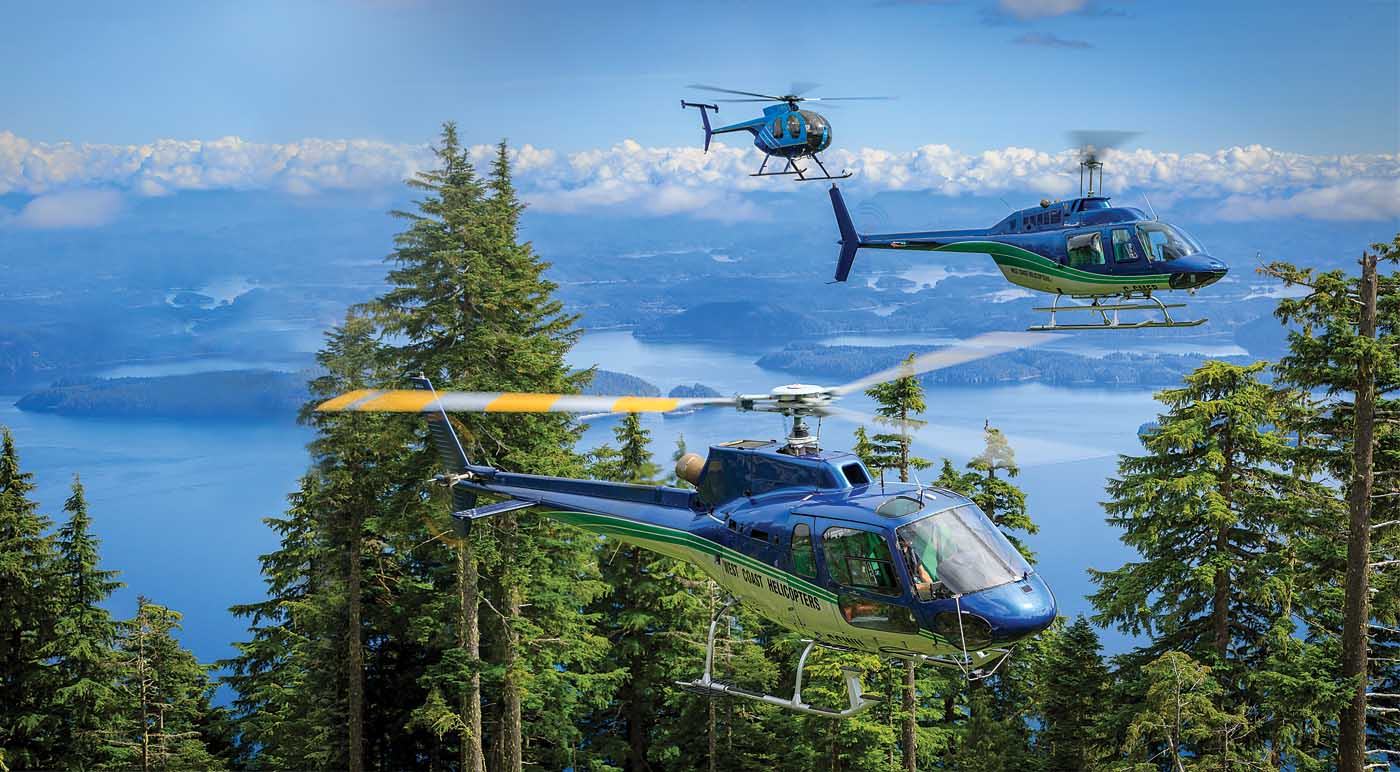Estimated reading time 19 minutes, 35 seconds.
Vancouver Island has a reputation as a place of stunning natural beauty, combining mountains, towering rainforests, beaches, and an island-dotted coastline. The south of the island is relatively easy to access and firmly on the tourist trail. It’s also home to the island’s largest cities — including British Columbia’s capital, Victoria.
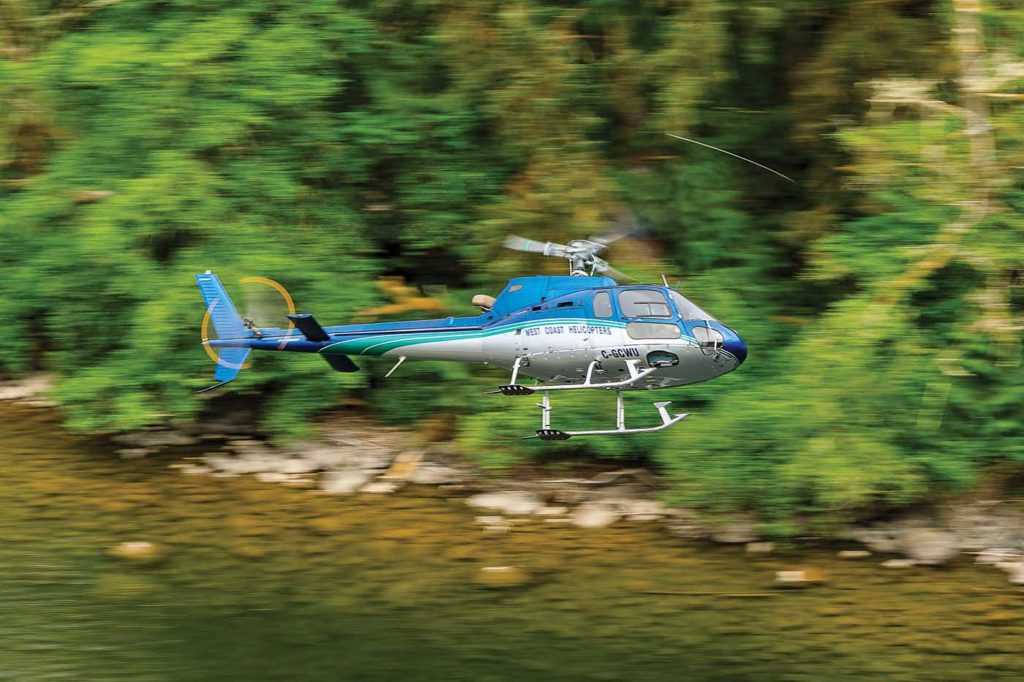
Venture to the north of the island, however, and the population thins dramatically, providing a very real sense that you’re on the edge of the wilderness — and in a land where natural resource extraction (in this case, logging) still plays a key role in the economy. Visitors here can hike the Cape Scott Provincial Park at the tip of the island, kayak the pristine waters, go caving, or enjoy the scuba-diving, fishing or camping opportunities it provides.
This part of the island also serves as a gateway to British Columbia’s beautiful, but largely inaccessible central coast, home to several world-class wilderness activities, such as heliskiing and heli-fishing.
For the last two-and-a-half decades, West Coast Helicopters has served as the vital connecting piece that enabled this wilderness tourism to establish, grow, and ultimately flourish. But it’s far from a one-trick company, with a breadth of operations that reflect its environment. It was built around supporting the forestry industry, and this remains a key part of its business, including some highly specialized operations. It also provides firefighting support when needed, along with environmental and wildlife work and charter services. And on the maintenance side, third-party maintenance, repair and overhaul (MRO) support promises significant growth opportunities in the future.
Based in the small town of Port McNeill on the northeast shore of Vancouver Island, West Coast Helicopters was established in 1993 by three partners: Peter Barratt, Terry Eissfeldt, and Wayne Finn. The three had worked for Canadian Helicopters at its base in the town, and when that company announced it would be making changes to their operation, Barratt, Eissfeldt and Finn decided to branch out on their own.

“I think the biggest thing we had in common was that we loved what we do,” said Eissfeldt. “Peter and Wayne loved flying, I loved maintaining, we loved doing a good job, and we looked at each other and said, ‘We won’t work any differently, any less or any more. We already put our lifeblood into how we do things. We can’t help but be successful in starting our own company.’ ”
Each brought their own area of expertise to the new company, with Eissfeldt’s being maintenance, Barratt providing flying expertise and local knowledge, and Finn’s specialty being the business side of operations.
The company was set up at Port McNeill Municipal Airport in the great outdoors — having no hangar — with the support of forestry operations providing the bulk of its work. The trio leased a Bell 206 and an AS350 B AStar, and began work under another company’s approved maintenance organization (AMO) and operating certificates.
“Those were great days — we were busy being busy,” said Eissfeldt. “We were hoping to get a good chunk of the work, and Peter had such a good reputation in the local area here that people only wanted to fly with him. They knew him, he was a fun, gregarious guy, he knew what he was doing, and it was safe. This region is a very difficult area to fly in at the best of times — just because of the geography and the weather conditions at any given moment. And so we didn’t just get a good chunk of the flying; we got all the flying.”
The three partners planned to be working under their own operating certificate and AMO within a year. Thanks to their successful launch, they not only achieved that aim with time to spare, they had also built their own hangar within the first 12 months.
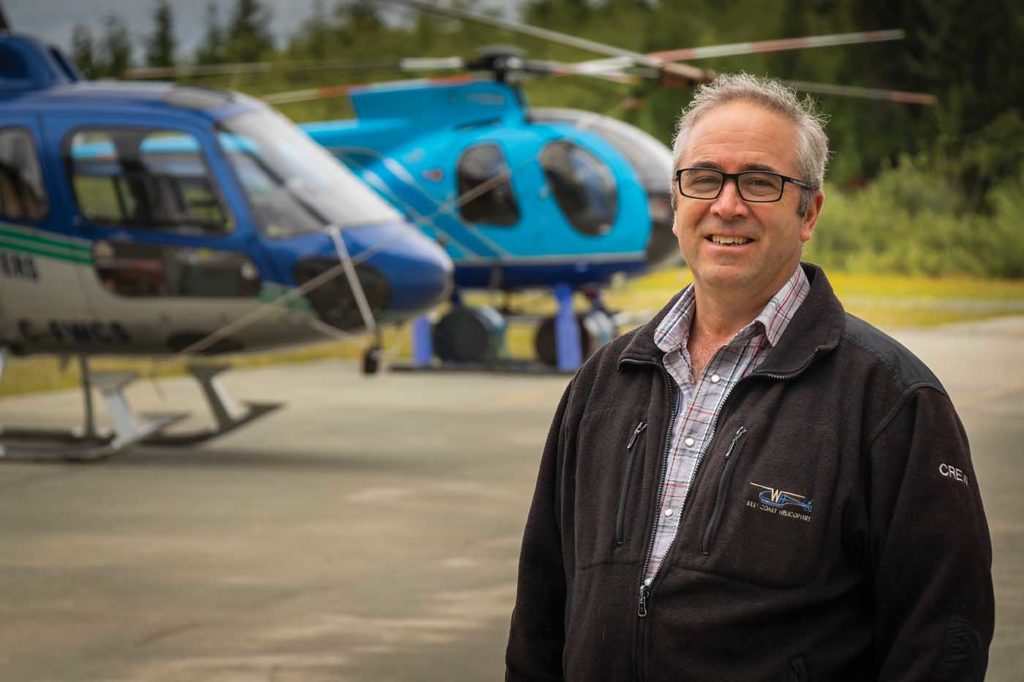
“We built that in between flights,” said Eissfeldt. “I’d be pouring concrete and putting up walls, insulation and everything else — so we started from a real grassroots level.”
Gradual growth
Growth at West Coast Helicopters has been gradual but steady over the years, with leased aircraft replaced by owned aircraft, an increase in staff and fleet size, and an expansion along the British Columbia coastline.
It now has two more bases down the east coast of Vancouver Island (in Campbell River and Nanaimo), and one on the central coast of mainland British Columbia (Bella Coola). Each has its own hangar, base manager, and staff.
The first base expansion took place in 1996, shortly after Finn left the company. Barratt and Eissfeldt were discussing future plans and opportunities, and thought a presence in Bella Coola would be worth exploring. After a few years there, they built a hangar and crew accommodations and grew the base.
The move to Campbell River and Nanaimo came in 2000, following the purchase of Long Beach Helicopters. The acquisition provided staff and aircraft (four AS350 B AStars), as well as bases in those locations. The more recent purchase of Peak Helicopters added further aircraft and facilities in Campbell River.
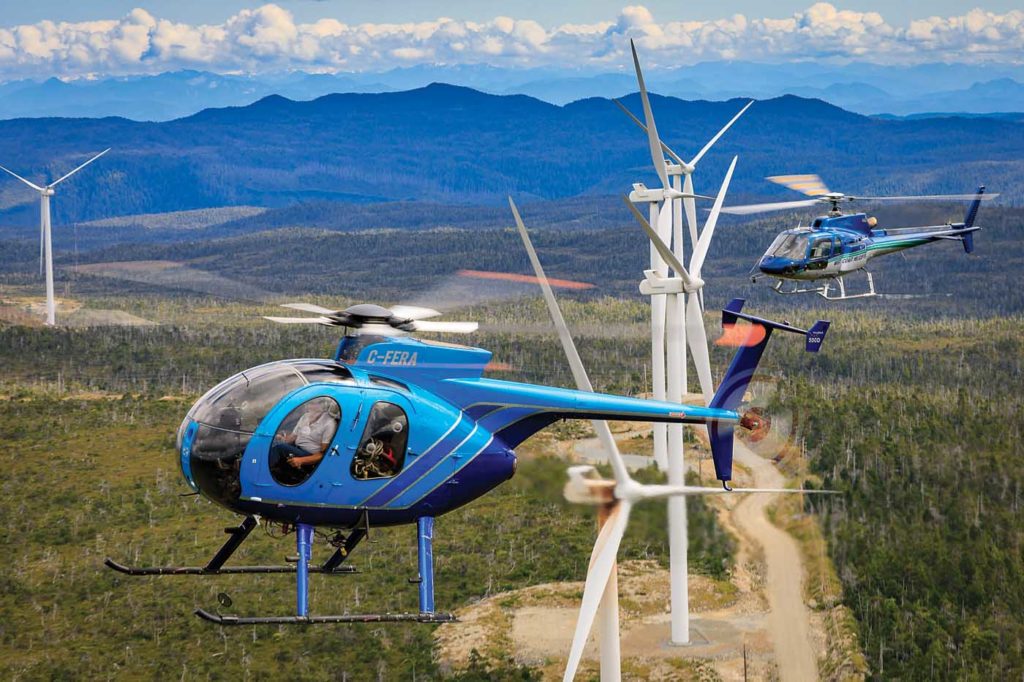
Today, about 65 people work across the company (although this does vary according to the season), including about 36 pilots and 15 maintenance staff.
Forestry work still makes up a large part of the company’s business (roughly 50 per cent), but the flourishing wilderness tourism work in the region is also a significant source of revenue (40 per cent).
West Coast Helicopters’ business was built around the AS350 AStar and the Bell 206, as those types were best suited to the local market requirements, said Eissfeldt. “People really enjoyed the AStar for the additional capability of more passengers, more speed, and more load,” he said. “The JetRanger was for the people that were only doing the twos and threes and doing quick hops.”
As the company grew over the years, its fleet swelled from two to 18. These include six Airbus AS350 B2s, two AS350 BAs, one H125, five MD 500s, and four Bell 206/206Ls.
“Peter was really instrumental in introducing the AStars to the market in north Vancouver Island as well as the mid coast of B.C.,” said Eissfeldt.
The AStars are generally used for servicing heli-fishing resorts in the summer, and heliskiing work in the winter. Much of the former take place at the famed luxury Nimmo Bay Wilderness Resort in the middle of the Great Bear Rainforest on the mainland, while the latter is focused a little further up the coast in the mountains around Bella Coola through a partnership with Bella Coola Heli Sports. Throughout the year, the aircraft also perform various utility roles at the bases as required, including firefighting.

The MD 500s typically take on logging camp support work, such as flying fallers and other forestry workers in and out. More specialized operations include slinging loads of shake blocks, and tree topping, which involves flying a giant saw underneath the aircraft to remove the tops of trees on the edge of logging areas that have been newly exposed to the elements.
The 206 fleet is used for various other duties, including some logging camp and engineering support. They are also occasionally used for fire suppression work, where they perform supervision flights for fire bosses, or to provide infrared scanning to show hotspots.
“I think diversity is the key to being successful and healthy,” said Eissfeldt. “If you end up just in the oil patch or mining and it goes down — which it always will, as we see now — so does your revenue.” The company is also keen not to rely on firefighting to pay the bills, treating such work as a bonus when it arrives.
“We feel if we can’t support ourselves with normal planned or scheduled ad hoc revenue then we have to make some changes,” said Eissfeldt.
One of the West Coast Helicopters’ lower-profile operations is servicing First Nations villages with medical practitioners, but it’s something it has done for many years. “Although it’s not a huge source of revenue, it’s part of a foundation of building relationships — and that’s what we’re about,” said Eissfeldt. “Anybody can work on or fly a helicopter . . . The important thing is how you relate to people, how much of a priority you place in that relationship. We really believe in that.”
A challenging flying environment
Work in the West Coast is often far from straightforward. “It’s a very challenging and dynamic environment — both in the weather and the type of work that we do,” said Clayton Spizawka, West Coast Helicopters’ chief pilot. “We have confined area operations, long line mountain flying, and then throw the weather in there… it can be difficult.”

The winter can bring storms from the Pacific, winds from the southeast and mechanical turbulence; while the summer sees fog become a regular challenge. “You have clients that want to start work at eight o’ clock in the morning, and you might not be able to see across the airport until 11,” said Spizawka.
New forestry sites often present the challenge of landing at unprepared sites, while working out of a camp involves using a long line that’s a minimum of 200 feet long.
“Flying an aircraft is challenging as it is, never mind having something hanging 200 feet below you that you’re trying to put in a two-foot box, or a thread down through the trees,” said Spizawka.
About 50 per cent of the Port McNeill base’s work involves mountain flying, with a good deal of work along the central coast of mainland British Columbia, due to the lack of road access to much of it.
The existence of predatory wildlife (predominantly black and grizzly bears) in this part of the world adds a further consideration when landing at remote sites. West Coast Helicopters’ pilots complete training courses to understand the best course of action should they encounter these wild animals.
“There can be conflict, but we always have and always will strive to reduce any impact on the local wildlife,” said Spizawka. “Most of the time any conflict can be resolved by separation, and if that’s not the resolution, then bear spray is the next step. I’ve spent a lot of time in the coastal river watersheds and I’ve had lots of encounters with bears, but they’ve always been able to be resolved peacefully.”
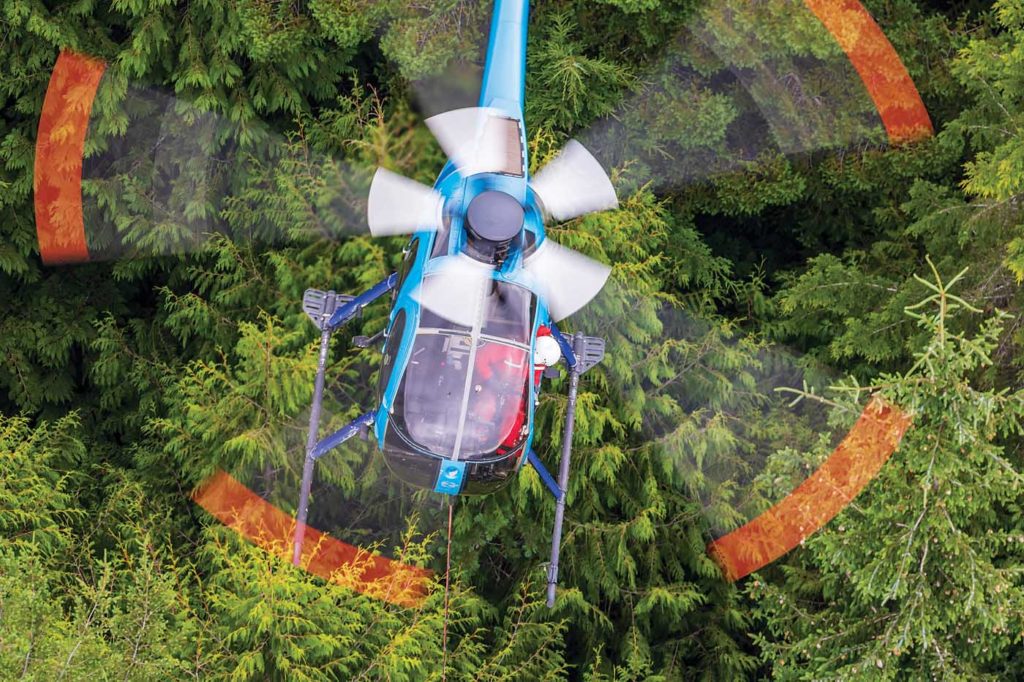
West Coast Helicopters’ facility in Port McNeill has expanded considerably from the original hangar, with that hangar’s offices converted into six bedrooms for non-local staff to use when they’re in town on rotation. Another room contains an on-site gym.
All this effort is to provide the best possible working environment — and draw — to pilots and maintenance technicians at a time when the industry is seeing a shortage of experienced personnel.
“We deal with the same shortage of personnel that the whole industry is seeing,” said Laine Valentine, West Coast Helicopters’ operations manager and base manager at Campbell River. “Getting qualified pilots and engineers to move to northern Vancouver Island or one of our bases is always a challenge.”
Part of the answer is in providing a working environment that people want to join, he added.
“We had a lot of pool people coming in, so we provide a living space for them, and a gym, because there’s nothing available in town,” he said. “So, we just try to care for the needs of the people that are coming in to work.”
Another part of the solution is investing in low-time pilots by putting them through a mentorship program with senior pilots to ensure the company maintains a pipeline of staff for the future.
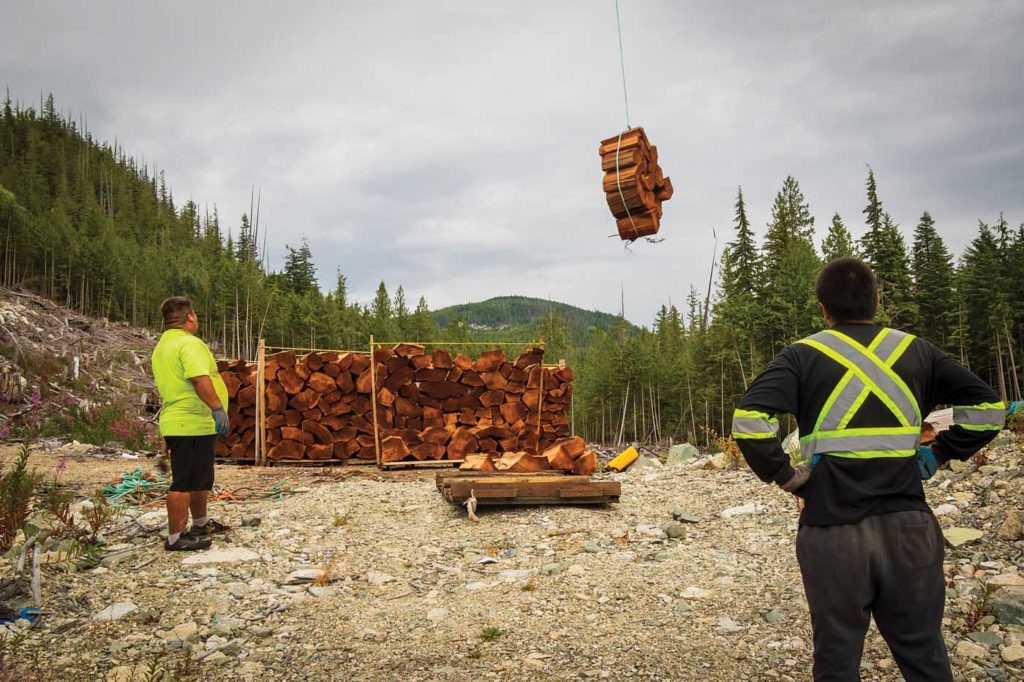
“We build them how we want them, and still maintain customer confidence in placing those individuals in a role where they’re set up for success,” said Spizawka. These pilots can build flight time by performing track and balance or test flights following maintenance, or through repositioning flights to move aircraft between bases. Then they can take on some of the less challenging operations, such as “pad to pad” crew change flights to remote sites for forestry workers. New type endorsements or additional training are also offered to staff to help them continue to grow.
“If you take good care of your employees, they are going to work hard for you,” said Spizawka. “Our typical clients don’t even know the management — it’s the pilots that are the frontline of the company and the face of the company the majority of the time. And so you have to make sure that you have people representing you the way you want to be represented.”
A developing reputation for MRO
The company’s chief engineer, Richard Kmiec, is based at the Nanaimo facility. He said it’s the West Coast’s rain — rather than operating over saltwater on the coast — that has the largest impact on typical maintenance activity.
“The thing that is affected most by the rain are our main rotor blades,” he said. “They’re subject to a lot of erosion just by hitting the rain at close to the speed of sound as they’re rotating. As far as corrosion is concerned, surprisingly we don’t have to deal with that a whole lot because of the weather not being extremely hot, even though we’re right by the saltwater.”
West Coast Helicopters is one of very few operators in Canada to be certified by the European Aviation Safety Agency, allowing it to sell parts and services to international third party customers. It works on aircraft both larger and smaller than its own fleet of light and intermediate helicopters, servicing aircraft ranging from the Robinson R22 to the Bell 212.

The company has third-party maintenance provisions at Nanaimo, with a paint shop and a Robinson Service Center at that location. Despite not operating a Robinson aircraft in its fleet, West Coast Helicopters chose to become a service center for the manufacturer following a request from a customer to maintain their R44. Third-party Robinson work has grown by word of mouth since then.
The company initially established its paint shop to work on its own aircraft, but it has been kept increasingly busy performing third-party work, again driven by word-of-mouth. Highland Helicopters and VIH are both customers.
“It’s a small industry, and people hear about it and want to try us out,” said Kmiec. “So, it’s worked out well.”
One of the longest-tenured employees at the company having joined in its first few years, Kmiec said the maintenance side of the house has seen only a small amount of staff turnover.
“We’ve had the same crew for many years,” he said. “We’ve hired a few people more recently in the last couple of years, but the rest of the guys that are with us have been with us for many years.”
The longevity of many of the staff at West Coast Helicopters is perhaps explained by the importance placed on good working relations by the company’s management.

“We treat our crews the way that we want to be treated,” said Eissfeldt. “We really believe in a great working environment, and with that, our people will want to do the best they can — and that translates to our customers.”
Part of creating the best working environment possible is in understanding the various personalities and character traits within the company, said Eissfeldt. “We’ve gone so far as to provide an in-house character analysis for people, using what’s called the DISC model,” he said. For example, some people have more of a dominant personality, others are more prominent in the “conscientious” area, while others might be more relationally-inclined.
“It’s an awareness tool, where not only are you more aware of yourself, but you’re aware of how to relate to other character types and personalities,” said Eissfeldt. “It’s certainly helped over the years in communications, and helps create much more of a safe working atmosphere.”
West Coast Helicopters has also been extremely proactive with its safety initiatives, winning awards from the British Columbia Aviation Council for its work in this area. Led by aviation safety officer Doug Strachan, it has had a safety management system (SMS) for over 15 years, and has been asked to give seminars to Transport Canada and the Federal Aviation Administration on the SMS programs it has implemented.
“We’ve seen huge areas of improvement and benefits to the company because of our SMS,” said Eissfeldt. “That’s by paying attention to the little things, identifying the hazards before they become incidents and accidents. And that’s a culture that we’ve been grooming and our guys and girls are doing it.”
Continuing to grow
In terms of future growth, West Coast Helicopters is firstly looking to become more profitable in the areas it’s already operating in. “We’ll look at how to make it more efficient, how to be better at what we do,” said Eissfeldt. “I don’t believe there’s anybody that can’t improve what they already do.”
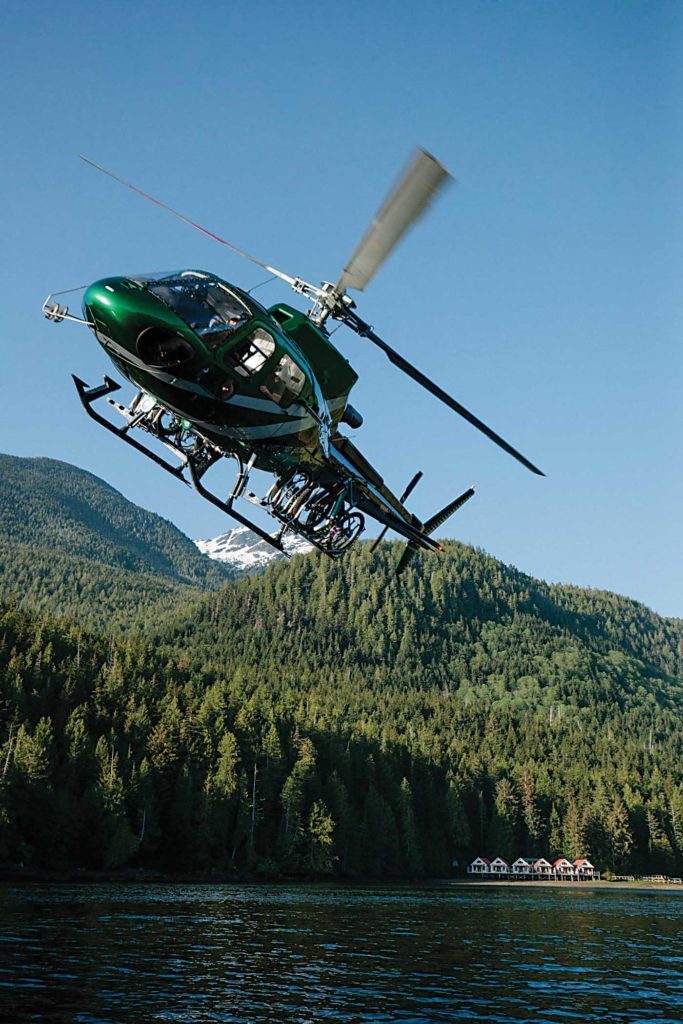
Third-party maintenance promises a major area of growth, and this will be focused in Nanaimo. “With the disparity in the U.S. dollar and the Canadian dollar, it’s a great opportunity to advertise south of the border, and encourage third party activity that way,” said Eissfeldt. “Reputation is a big deal and we’ve spent quite a few years making sure we have the right reputation — one that is founded on safety, service and reliability.”
Operationally, the company is looking at opportunities in training mountain flying techniques from its base in Bella Coola, and is considering some new products to service the tourism market, such as cultural tours with first nations communities.
With Barratt having retired in November 2018, Eissfeldt is now the sole founder remaining from the trio that established West Coast Helicopters with two leased aircraft on the side of a remote airport in 1993. Through hard work, a focus on building good relationships, and a forward-thinking safety philosophy, the company has gone from strength to strength. And having established such a solid foundation, it seems well set to begin its next chapter of operations at the frontier of the wild.
